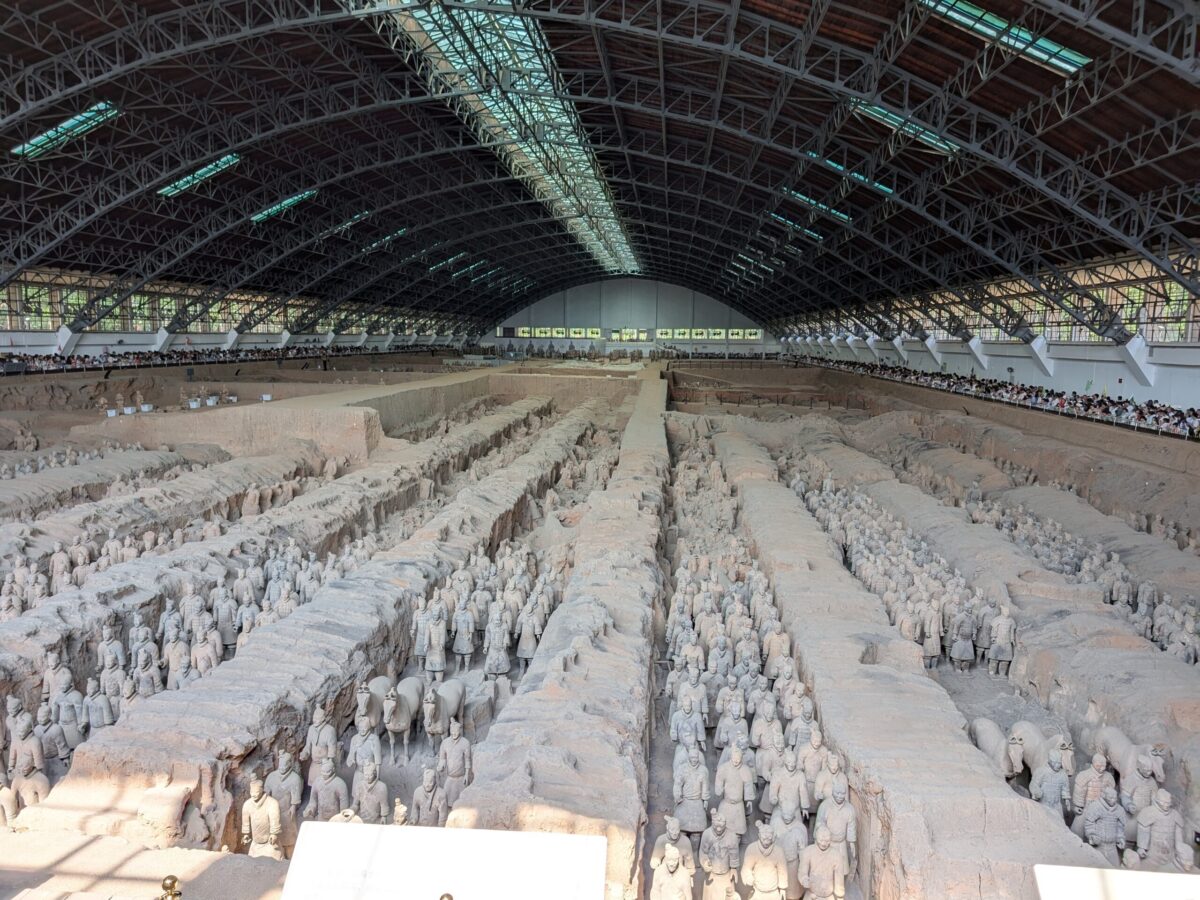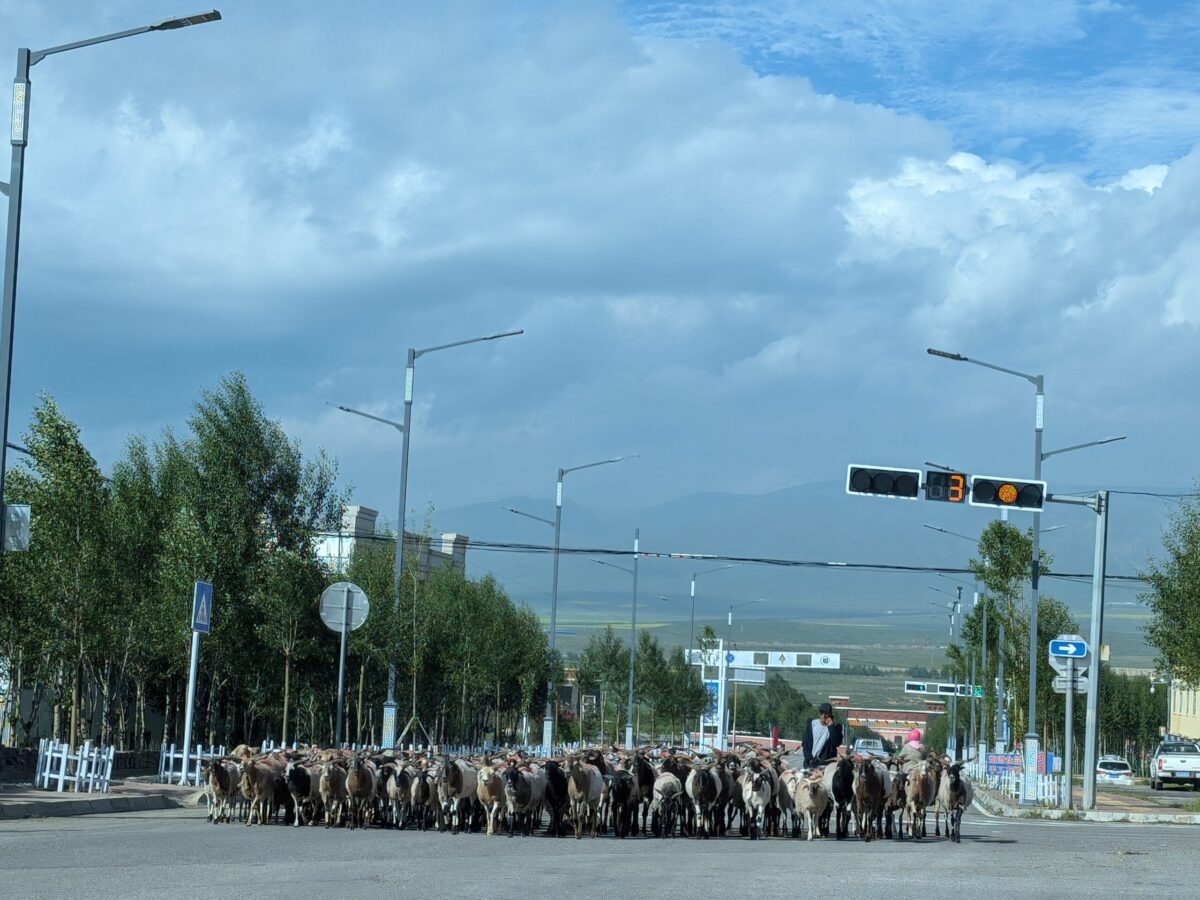by Iris Yim
From July 1 to 19 this year, I traveled through China with my husband and two children, visiting Xi’an, Xining, and Qinghai Lake in northwestern China; Chengdu in the southwest; and finally heading south to my hometown of Zhaoqing in Guangdong. We concluded our China itinerary in Hong Kong before heading to Taipei for the last leg of our Asia trip.
I was born in Guangdong, China, and left in 1987. Since then, I’ve kept up with news about China from afar and occasionally communicated with friends and family on WeChat. However, I hadn’t returned to the country since 2009 for a focus group project and had never really traveled within China, particularly to culturally diverse areas like Xi’an (the starting point of the Silk Road and an international city in the 7th century), Xining, which has a mix of Muslim, Tibetan, and Han populations, and Qinghai Lake, predominantly inhabited by Tibetans. So, this trip was both highly anticipated and exciting.
Overbuilding and a Sluggish Economy
My first impression upon stepping foot in China was miles and miles of new apartment buildings on the outskirts of Xi’an, our first stop. The airport is located an hour away from the city, but for most of that journey, I saw nothing but brand-new construction springing up from seemingly nowhere. This left me wondering: does Xi’an have a large enough population to justify these new buildings? Do people have the means to buy them? Are they even interested in living an hour away from the city?
Consider this: the one-hour car ride from the airport to the city costs around 100 RMB, while most rides within the city cost 20-30 RMB. According to fang.com, the average price per square meter in Xi’an in July 2024 is 13,617 RMB. A two-bedroom apartment of 80 square meters would cost 1,089,360 RMB—out of reach for most people with regular jobs. The situation illustrates the issues of overbuilding, over-leveraging, and the risks posed to state-owned banks, contributing to a rather bleak economic outlook in China right now. The latest youth unemployment rate for those aged 16 to 24 is 15.3%.
A driver told me that Xining, which has the highest population concentration in Qinghai Province (40% of the province’s population), lost 70% of its population last year. While I couldn’t verify this statistic, the gist is clear: the local economy is struggling so much that many people have decided to move out, unable to make a living. These signs partly explain why some Chinese migrants are traveling through Central America to cross the southern border into the US. Others have found more peculiar ways to cope; one cab driver in Chengdu suggested people should watch more CCTV news broadcasts to feel more content—a notion I found amusing.
The Ubiquity of Electric Vehicles (EVs)
Despite the sluggish economy, I was quite impressed by the penetration of electric vehicles (EVs) in China, both in terms of the number on the road and the established charging infrastructure. There were 8.1 million new EV registrations in China in 2023, compared to 1.2 million EVs sold in the US. Government policies certainly gave the EV industry in China a strong push. For example, all hired car operators must use an EV to renew their business license. In the US, range anxiety and lack of charging infrastructure are the primary barriers to EV adoption.
In China, I was impressed with the charging infrastructure. Apparently, all gas stations now have EV chargers. I asked one of the drivers in Xi’an how he charges his EV at home, given that most people in China live in apartments, and single-family houses are virtually non-existent. Charging in apartment buildings is a barrier for cities like New York, according to market research studies I’ve conducted related to EVs. The driver explained that you can buy a charging kit, which comes with a meter, and pay your share of the electricity to the building. A regular charging kit (for slow overnight charging) costs 2,000-5,000 RMB and typically includes installation. This allows you to charge your EV even if you live in an apartment—something the US could potentially learn from.
Security and Crime Rates
As we passed through subway stations, train stations, and airports in China, I couldn’t help but notice the high level of security checks. For example, when entering an airport, there is a security check right at the gate. A security guard scans every passenger with a metal detector, and you must place your luggage on a conveyor belt for inspection. Then, there’s the usual security check after check-in that you would encounter in the US. Security checks are also conducted at subway and train stations. Essentially, you can’t carry any metal objects on a subway or train. My husband had a pair of scissors in his bag and had to give them up at a train station. The security guard wanted to write up a report on this but gave up when she saw a Danish passport, as she couldn’t read or write in English.
ID is required everywhere—for museums, trains, and hotels—for both booking and check-in, for every member of the party. However, the entire system is built around data entry and verification for Chinese IDs. If you’re booking with a passport, some museums won’t allow it simply because their system can’t handle the data entry. In such cases, you’ll have to purchase tickets at the door, which isn’t advisable if it’s a popular tourist destination, especially during the summer months.
Due to the extent of ID verification, security checks, and an extensive network of surveillance cameras, China has one of the lowest crime rates in the world.
My Experience with Payment Apps
Unlike in the US, monetary transactions in China have virtually all gone digital, even for street vendors. Until recently, foreigners couldn’t use China’s popular payment apps, such as Alipay and WeChat Pay, because they didn’t accept foreign credit cards. Since China’s vast ecommerce is primarily based on these two apps, without access to them, you couldn’t book a car, pay for purchases and food, or buy museum tickets. To stimulate the economy, China has implemented some tourist-friendly policies, loosening regulations on Alipay and WeChat Pay so that foreign visitors can now link their credit cards and spend money in China.
I had different experiences using WeChat Pay and Alipay. You must upload your passport for ID verification on both apps, but Alipay was much more user-friendly. ID verification was completed within minutes on Alipay, whereas, despite multiple attempts, I couldn’t get verification done on WeChat Pay and therefore couldn’t use the app during my trip. I even contacted customer service twice, but to no avail. Fortunately, Alipay worked well for the most part. I could pay for 90% of my purchases on Alipay and book all car rides through the app (which was crucial, as otherwise, I couldn’t get around). The only times I couldn’t use Alipay were in remote areas where WeChat Pay is more commonly used and when vendors only had personal Alipay accounts, not business ones, in which case they couldn’t accept payments from an Alipay account linked to a non-Chinese credit card.
Final Thoughts
Despite geopolitical tensions and some inconveniences while traveling in China, I would still recommend it. As China tries to find its place and define itself in the world in this post-pandemic recalibration, there are bright spots of innovation and growing pains amid a slowing economy. There is still much for the world to learn from the China experience, particularly in EVs and ecommerce. For me, the most important part of the trip was helping my kids connect with their cultural roots. Before the trip, my 15-year-old son kept complaining about going to China because he had heard nothing but negative things about the country from school and the news. Now, he’s asking when we can visit Zhaoqing, Guangdong, and Hong Kong again to see relatives and photograph snakes (he had great luck finding rare snakes in these two places).















